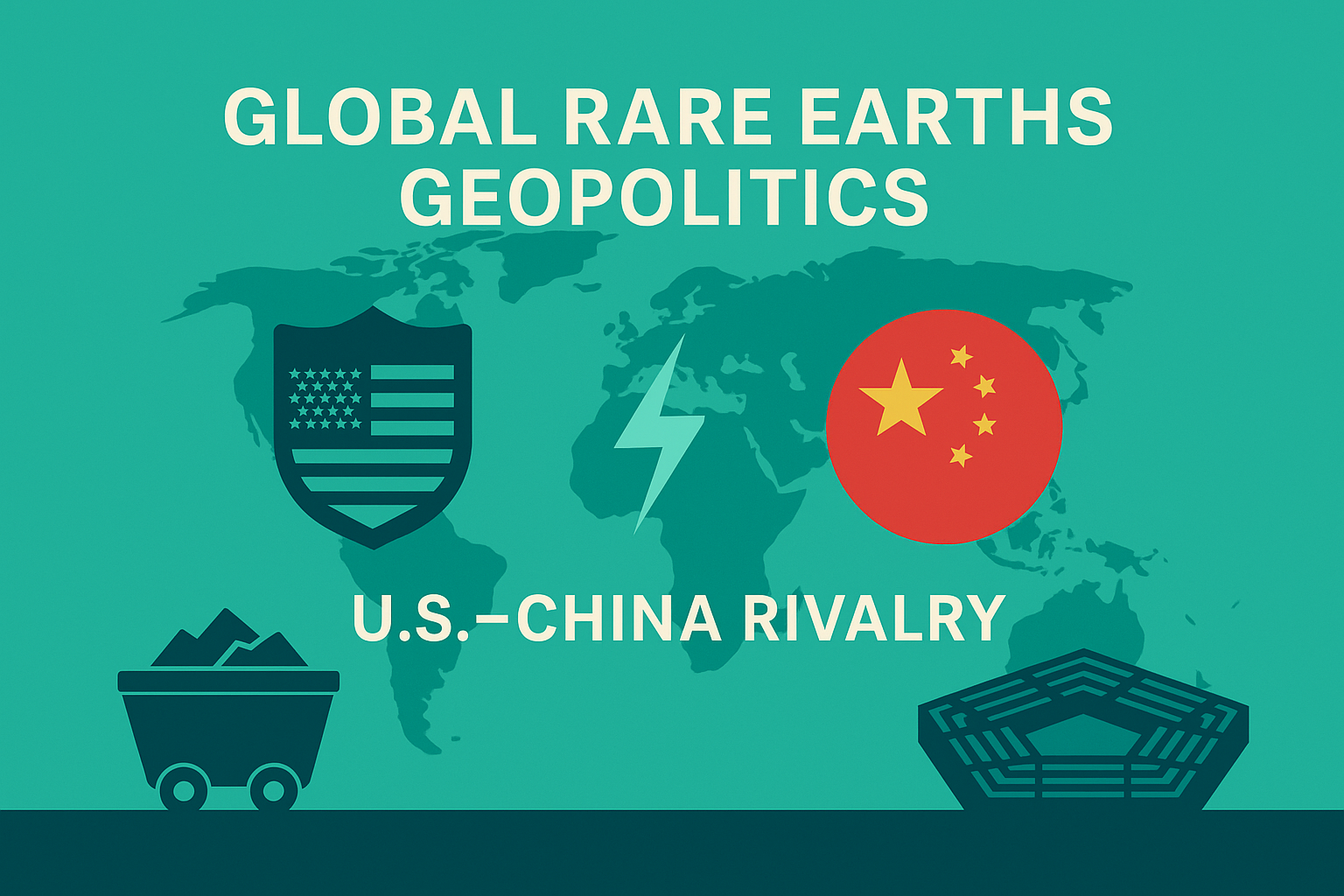ー The Frontline of a Renewed Resource War under US–China Rivalry ー
1. Overview: Rare Earths Reemerge as Strategic Assets
By autumn 2025, the US–China confrontation over technology and security has entered a new phase. China’s announcement of tightened export controls on rare earths, set to take effect in December, marks a shift from resource management to geopolitical weaponization. In response, the US Department of Defense (Pentagon) has accelerated a $1 billion strategic minerals stockpiling initiative. Both powers are openly turning critical minerals into instruments of state competition.
For Japan and JBIC, this is not merely a supply issue but a structural risk directly tied to technological sovereignty, defense industrial security, and international financial stability.
2. Ongoing Developments
(1) China: Politicizing Export Controls
- New regulations require export licenses for products containing more than 0.1% China‑origin rare earths.
- Semiconductor, AI, and defense applications are now classified as “dual‑use” and subject to end‑use screening.
- China demands “non‑re‑export guarantees” even from partners such as India and ASEAN.
(2) United States: Dual Strategy of Stockpiling and Domestic Development
- The Pentagon is expanding its strategic stockpile and sustaining support for US‑based producer MP Materials.
- Reinforced Buy American Defense Materials provisions limit foreign participation, even among allies.
- The Defense Logistics Agency (DLA) is institutionalizing “supply chain sovereignty.”
(3) India: Strategic Stockpiling and Diplomatic Balancing
- India plans a national stockpile equivalent to two months of domestic rare‑earth consumption.
- Seeks cooperative refining and export channels with ASEAN and Australia.
- Faces pressure from China to prevent onward exports to the US or allied markets.
3. Latent Flashpoints and Geopolitical Risks
| Category | Potential Flashpoint | Expected Impact | Timing |
|---|---|---|---|
| US–China Trade | Escalating export‑control retaliation | Price surge, bifurcated supply chains | Q4 2025 |
| Environmental Policy | China’s crackdown on illegal mining | Supply contraction, black‑market expansion | Ongoing |
| Emerging‑Market Rivalry | India–ASEAN mining rights disputes | Project delays, foreign capital flight | Early 2026 |
| Defense Industry | US domestic‑sourcing mandates | Allied firms excluded from contracts | Late 2025 |
| Resource Nationalism | African nationalization trends | Contract renegotiations, disruptions | 2026 onward |
4. Implications for Japan
- Supply‑chain disruption risk – Japanese manufacturers reliant on China‑origin magnets and oxides face delays or suspension under the new licensing regime.
- Indirect sanction exposure – Suppliers to US defense programs using Chinese materials risk secondary restrictions.
- Investment risk – JBIC‑backed mining or processing ventures in India, ASEAN, or Africa face political or environmental interruptions.
- Financial risk – Volatility in rare‑earth prices could amplify instability in commodity‑linked bonds and futures markets.
5. Strategic Responses for Japan
(1) Supply Diversification
- Strengthen alternative sourcing through ASEAN, India, and Australia.
- Promote a Joint Strategic Stockpile Facility under JBIC leadership.
(2) Technological Independence
- Launch national programs for rare‑earth recycling, alloy substitution, and magnet‑free motor technologies.
- Map supply‑chain exposure across defense and energy sectors.
(3) Multilateral Frameworks
- Institutionalize a Quad Rare‑Earth Security Forum (Japan, US, India, Australia).
- Expand–JOGMEC cooperation for resource development and refining in Africa and Latin America.
6. Strategic Insight
Rare earths are no longer a mere commodity; they are becoming a tri‑sector weapon of influence—linking security, technology, and finance in a new geopolitical equilibrium. Over the next 12 months, the key triggers to watch are the enforcement of China’s export‑control regime and the Pentagon’s forthcoming procurement policies.
Japan now faces the challenge of redesigning its supply network while maintaining technological autonomy. For JBIC, this moment represents a strategic pivot—from defensive financing to proactive investment. Building sustainable extraction and processing capacity across Asia and Africa will be fundamental to the next generation of economic security.


